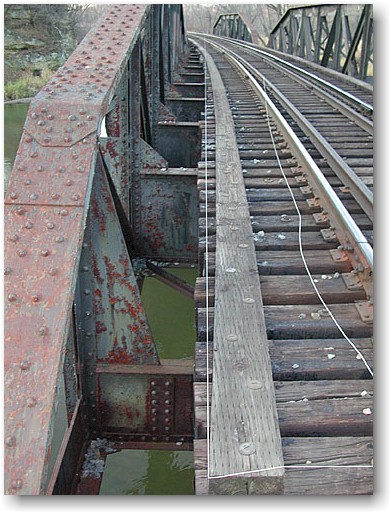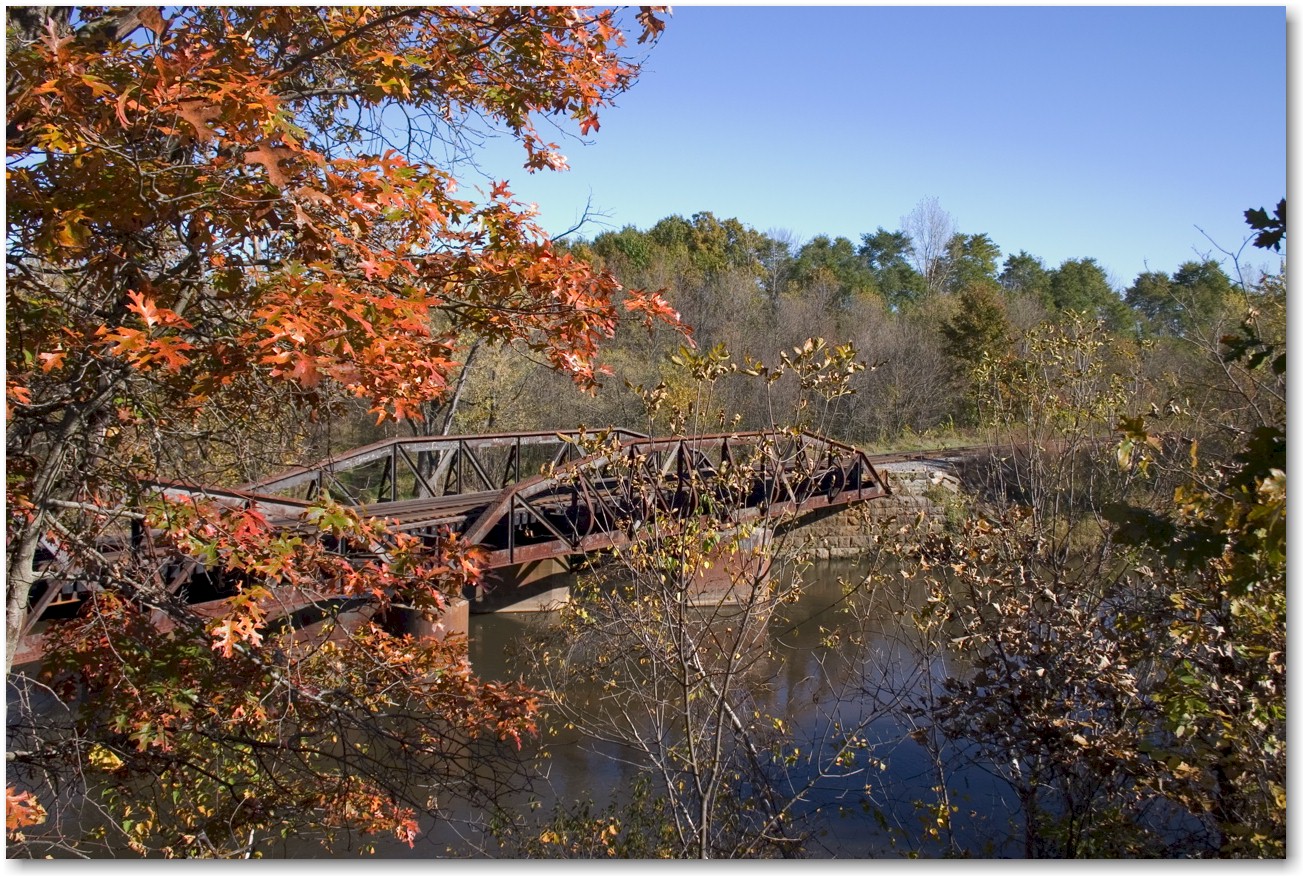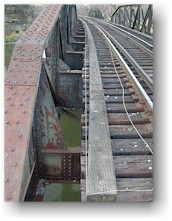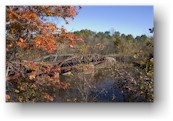|
The GBW's crossing of the Trempealeau River at Dodge, Wisconsin used an unusual skewed two-span pony truss bridge with a curved alignment to cross the muddy green waters of the Trempealeau River. What makes this bridge unusual?
Charles Tomashek's photo of this bridge captures the details of the superstructure. Note how the track is supported by floor beams which connect the trusses on the left and right sides of the track. These beams are spaced about ten feet apart -- there are beams under the ties which span from floor beam to floor beam and support the ties and rail. Because the track is curved, the bridge has a "superelevation" - the outside rail is higher than the inside rail. Note too how the truss is made up of a series of overlapping plates -- more and more plates are riveted together as you get to the middle of the span. There are four rails on the bridge because the two inner rails are guard rails placed to help keep a derailed car in place so it didn't damage the bridge. The guard rails were a little lower than the main running rails on the outside -- notice that the running rails sit on tie plates on each wooden tie, while the guard rails are just spiked directly to every third tie. The timbers which run the length of the bridge at the outside of each tie are used to help keep the ties in their proper location. When a train brakes or and engine accelerates while on the bridge, it tries to push the rails and ties in the opposite direction, and these timbers keep the ties from bunching up or turning over from the train forces. At some point in the past, additional piers were added in the middle of each span, making it a four-span bridge. This was done to increase the load-carrying capacity of the bridge as locomotive and car weights increased. |

Charles Tomashek photo, November 11, 2001
This photo may not be reproduced without permission.

Charles Tomashek photo, 2004
This photo may not be reproduced without permission.

